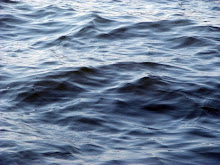

 Blondie Hasler is an icon in the annals of singlehanded sailing and a large contributor to the experience and definition of minimalist cruising. His accomplishments are legendary. Lt.Col.Herbert George Hasler DSO,OBE first achieved sailing notoriety in 1932, the year he was commissioned as a marine for sailing a 14ft. dinghy singlehanded round trip Plymouth to Portsmouth and back. He was awarded the Croix de Guerre for heroism in Norway and was the motivation and facilitator of Operation Frankton. He designed the folding kayaks used in this ''raid" , most likely from German models. A film chronicling these exploits, was released in 1955 and named the "Cockleshell Heroes" and a book of the same name soon followed. After the conclusion of the war he turned to blue water cruising/racing as his field of inquiry. Taking his que from Uffa Fox and bucking the convention of the day he first turned to the 30 square meter Tre Sang, a light displacement "toothpick" considered unsuitable for offshore racing. He was winning races and being convinced that his instincts about light displacement were on target. Some sources indicate he also was influenced by the J.Laurent Giles design Myth of Malham, also of light displacement and sporting a bulb keel. These early achievements notwithstanding, Blondie Hasler is probably most remembered for what came next. An indefatigable experimenter and tinkerer, Blondie had an overwhelming desire to"design and build the smallest yacht that could be sailed in safety and with the minimum of effort". Across oceans. He achieved his goal with three bold strokes. First, in the early 1950's he commissioned a Folkboat, a noteworthy Scandinavian design of about 25'9", but his with no cockpit, completely decked over except for two small hatches, and began experimenting with rigs. He eventually 'rediscovered' the Chinese junk rig and found it to be an aerodynamic jewel. Meanwhile he was also exploring various configurations of windvane self steering. He eventually resolved the problem to his satisfaction inventing the Hasler self steering. To publicise and spread word of his discoveries and decisions toward manageable simplified ocean cruising for the singlehand sailor, the next light bulb for the Lt. Col. was an Atlantic crossing race, defined thus: "A sporting event to encourage the development of boats, gear, supplies and technique for single-handed passages under sail." There was a dramatic lack of rules—no handicaps, no compulsory equipment, no marks to round. When asked about safety and the need to carry a radio transmitter, Hasler merely replied "It would be more seemly to drown like a gentleman." This was 1956 and his first taker was none other than Francis Chichester who eventually won the race, with Blondie in second. They had reportedly made a bet of a half crown as to who would get there first. A few other daring souls became interested, but it took until 1960 to bring the idea to fruition. Blondie eventually found a sponsor in the English newspaper the Observer and thus was born the first OSTAR. With this brilliant move Blondie Hasler had created the world of modern singlehanded ocean racing, with all its permutations. The race proved the validity of his innovations and inheritors of his mantle are stil racing today (ie: Roger Taylor). He eventually sold Jester to Michael Richey who continued racing in the OSTAR through 2004. The original jester was lost in 1988 andwas rebuilt through the help of a trust. To a tee. More on Michael later. Blondies inventions revolutionised the popularity and viability of singlehanded sailing, with repercussions far beyond the OSTAR. Creed O'Hanlon says:"The competitors in the first singlehanded transatlantic race – not just Hasler and Chichester, but David Lewis, Val Howells and Jean Lacombe – were my earliest inspirations to sail offshore. They were, all of them, smart, bold and eccentric and had lived big lives in which the race was just one more interesting episode. There was nothing fancy about their boats which, with the exception of Chichester's, were tiny and only basically equipped (Lacombe's especially). The Jester event is an homage to their spirit and guys like Roger Taylor are very much the rightful heirs – as opposed to the commercial gladitaors such as Macarthur and Joyen – of Hasler's tradition. To be part of it is, for me, maybe, a way of reclaiming what is really interesting about racing in small boats, unsupported by sponsorship and too much technology." Creed is referring to the Jester challenge, also of which you'll get more later. I also asked Roger Taylor to comment on the influence of Blondie in his sailing philosophy and he replied: "belief in the power of lateral thinking, not following received wisdoms and, more practically, his proof, via Jester,that ocean sailing does not have to be a mad, machismo thrash - a warm,relaxed and dry skipper who never has to exit the hatch will do a more seamanlike job than a skipper wrung out and exhausted from constant deckwork."
Blondie Hasler is an icon in the annals of singlehanded sailing and a large contributor to the experience and definition of minimalist cruising. His accomplishments are legendary. Lt.Col.Herbert George Hasler DSO,OBE first achieved sailing notoriety in 1932, the year he was commissioned as a marine for sailing a 14ft. dinghy singlehanded round trip Plymouth to Portsmouth and back. He was awarded the Croix de Guerre for heroism in Norway and was the motivation and facilitator of Operation Frankton. He designed the folding kayaks used in this ''raid" , most likely from German models. A film chronicling these exploits, was released in 1955 and named the "Cockleshell Heroes" and a book of the same name soon followed. After the conclusion of the war he turned to blue water cruising/racing as his field of inquiry. Taking his que from Uffa Fox and bucking the convention of the day he first turned to the 30 square meter Tre Sang, a light displacement "toothpick" considered unsuitable for offshore racing. He was winning races and being convinced that his instincts about light displacement were on target. Some sources indicate he also was influenced by the J.Laurent Giles design Myth of Malham, also of light displacement and sporting a bulb keel. These early achievements notwithstanding, Blondie Hasler is probably most remembered for what came next. An indefatigable experimenter and tinkerer, Blondie had an overwhelming desire to"design and build the smallest yacht that could be sailed in safety and with the minimum of effort". Across oceans. He achieved his goal with three bold strokes. First, in the early 1950's he commissioned a Folkboat, a noteworthy Scandinavian design of about 25'9", but his with no cockpit, completely decked over except for two small hatches, and began experimenting with rigs. He eventually 'rediscovered' the Chinese junk rig and found it to be an aerodynamic jewel. Meanwhile he was also exploring various configurations of windvane self steering. He eventually resolved the problem to his satisfaction inventing the Hasler self steering. To publicise and spread word of his discoveries and decisions toward manageable simplified ocean cruising for the singlehand sailor, the next light bulb for the Lt. Col. was an Atlantic crossing race, defined thus: "A sporting event to encourage the development of boats, gear, supplies and technique for single-handed passages under sail." There was a dramatic lack of rules—no handicaps, no compulsory equipment, no marks to round. When asked about safety and the need to carry a radio transmitter, Hasler merely replied "It would be more seemly to drown like a gentleman." This was 1956 and his first taker was none other than Francis Chichester who eventually won the race, with Blondie in second. They had reportedly made a bet of a half crown as to who would get there first. A few other daring souls became interested, but it took until 1960 to bring the idea to fruition. Blondie eventually found a sponsor in the English newspaper the Observer and thus was born the first OSTAR. With this brilliant move Blondie Hasler had created the world of modern singlehanded ocean racing, with all its permutations. The race proved the validity of his innovations and inheritors of his mantle are stil racing today (ie: Roger Taylor). He eventually sold Jester to Michael Richey who continued racing in the OSTAR through 2004. The original jester was lost in 1988 andwas rebuilt through the help of a trust. To a tee. More on Michael later. Blondies inventions revolutionised the popularity and viability of singlehanded sailing, with repercussions far beyond the OSTAR. Creed O'Hanlon says:"The competitors in the first singlehanded transatlantic race – not just Hasler and Chichester, but David Lewis, Val Howells and Jean Lacombe – were my earliest inspirations to sail offshore. They were, all of them, smart, bold and eccentric and had lived big lives in which the race was just one more interesting episode. There was nothing fancy about their boats which, with the exception of Chichester's, were tiny and only basically equipped (Lacombe's especially). The Jester event is an homage to their spirit and guys like Roger Taylor are very much the rightful heirs – as opposed to the commercial gladitaors such as Macarthur and Joyen – of Hasler's tradition. To be part of it is, for me, maybe, a way of reclaiming what is really interesting about racing in small boats, unsupported by sponsorship and too much technology." Creed is referring to the Jester challenge, also of which you'll get more later. I also asked Roger Taylor to comment on the influence of Blondie in his sailing philosophy and he replied: "belief in the power of lateral thinking, not following received wisdoms and, more practically, his proof, via Jester,that ocean sailing does not have to be a mad, machismo thrash - a warm,relaxed and dry skipper who never has to exit the hatch will do a more seamanlike job than a skipper wrung out and exhausted from constant deckwork."Blondie Hasler retired in later years to a home in Scotland where he pursued organic farming and the reinvention of agricultural methods until his death in 1987. He is well remembered.






2.JPG)





















2 comments:
Hello,
I have been a fan of your blog for some time now.
I was particularly delighted to read your post about Blondie Hasler.
He has been well known among us older Brit sailors for many years. It is good to know that not only his exploits but his sailing philosophy are not forgotten.
Though I do have reservations about the commercial aspects of the big name races such as the Volvo and the Vendée Globe I do have a great deal of respect for the sailors and enjoy following their progress. However I personally am more inspired by races such as the Jester Challenge. Unfortunately these low key events aren’t so easy to keep track of. I was fortunate enough to see the start of this year’s Jester race. The Junk Rig Association, of which I am a member, timed its UK summer rally to coincide with the start.
My own boat is elderly wooden and has a minimum of gear but I’m no Luddite I believe in using technology where appropriate. After all if it wasn’t for the internet I would not be able to read such superb blogs such as yours.
Thank you,
Mike.
Hi Thomas,
great post!
It is allways good to remember the roots. The sources where we shound allways go back to, to have a cristal clear drink.
Your blog hepls us to remember the way.
Greetings from Rio,
Peter
Post a Comment